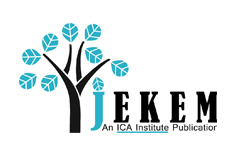Abstract
In the last 30 years China has integrated itself within the global economy, not only contributing to sustained growth within the country’s economy, but also to continuous growth of the economies of its trading partners. This paper discusses the momentous changes regarding China’s economic transformation and movement from a centrally planned economy to a modern market economy. The overarching goal of this paper is to delve into the conceptual foundation for understanding international trade as an engine of growth. The paper compares the economic development in the periods before, during and after economic liberalization, and provides data and graphs to illustrate and verify the economic gains from trade. The theoretical model employed in this paper is the neo-classical model of international trade interpreted by Paul Samuelson. This paper will also discuss China’s accession to the World Trade Organization and the benefits that are inherent in an organization that promotes free trade. The last section of the paper examines the economic growth prospects of China in the near future, as well as the areas of concern that Chinese officials will need to address in order to foster sustained economic growth.
DOI
10.7885/1946-651X.1040
